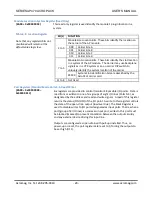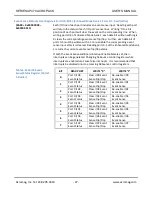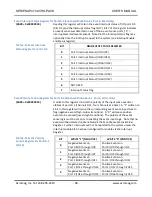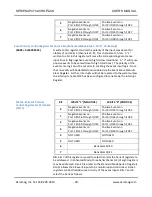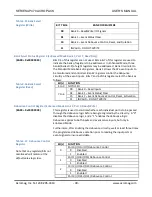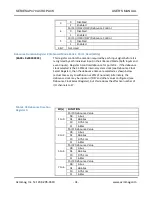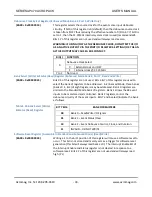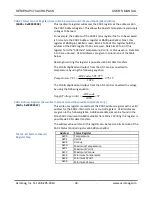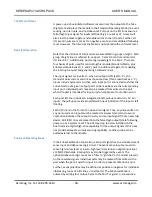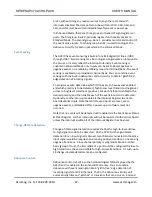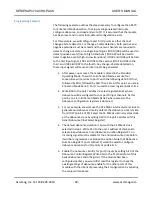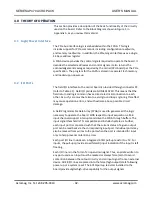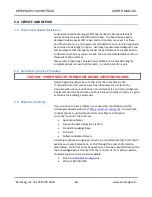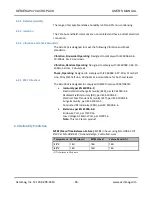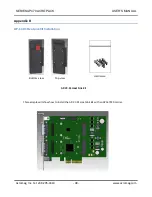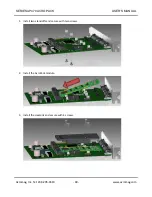
SERIES AP470 ACROPACK
USER
’S MANUAL
Acromag, Inc. Tel: 248-295-0310
- 37 -
http://www.acromag.com
- 37 -
www.acromag.com
order, without doing any reads or writes to any other port and with
interrupts disabled. The data pattern to be written is 07H, 0DH, 06H, and
12H, and this must be written immediately after reset or power-up.
In Enhanced Mode, there are three groups (or banks) of eight registers or
ports. The first group, bank 0, provides register functionality similar to
Standard Mode. The second group, bank 1, provides monitor and control of
the event sense inputs. The third group, bank 2, is used to configure the
debounce circuitry for each input while in the Enhanced Mode.
Event Sensing
The AP470 has event sense logic built-in for all 48 digital I/O lines, I/O00
through I/O47. Event sensing may be configured to generate an interrupt to
the carrier, or merely reflect the interrupt internally. Event sensing is
enabled in Enhanced Mode only. Inputs can be set to detect positive or
negative events, on a nibble-by-nibble (group of 4 I/O lines) basis. The event
sensing is enabled on an individual channel basis. You can combine event
sensing with the built-in debounce control circuitry to obtain “glitch-free”
edge detection of incoming signals.
To program events, determine which I/O lines are to have events enabled
and which polarity is to be detected, high-to-low level transitions (negative)
or low-to-high level transitions (positive). Set each half-port (nibble) to the
desired polarity, and then enable each of the event inputs to be detected.
Optionally, set the interrupt enable bit the Interrupt Register to enable
board level interrupts. Note that all I/O event inputs are reset, set to
negative events, and disabled after a power-up or software reset has
occurred.
Note that no events will be detected until enabled via the Event Sense Status
& Clear Register. Further, interrupts will not be reported to the carrier board
unless the interrupt enable bit of the Interrupt Register has been set.
Change-Of-State Detection
Change-of-State signal detection requires that both a high-to-low and low-
to-high signal transition be detected. On the AP470, if change-of-state
detection for an input signal is desired, two channels connected to the same
input signal would be required--one sensing positive transitions, one sensing
negative transitions. Since channel polarity is programmable on a nibble
basis (group of four), the first nibble of a port could be configured for low-to-
high transitions, the second nibble for high-to-low transitions. As such, up to
24 change-of-state detectors may be configured.
Debounce Control
Debounce control is built into the on-board digital FPGA employed by the
AP470 and is enabled in the Enhanced Mode only. You can combine
debounce with event sensing to obtain “glitch-free” edge detection of
incoming signals for all 48 channels. That is, the debounce circuitry will
automatically filter out “glitches” or transients that can occur on received


